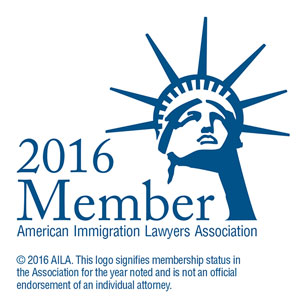TO AMEND OR NOT TO AMEND: USCIS ISSUES FINAL GUIDANCE ON MATTER OF SIMEIO SOLUTIONS
U.S. Citizenship and Immigration Services (USCIS) issued final guidance on July 21, 2015, instructing when an employer should file an amended or new H-1B petition following Matter of Simeio Solutions, LLC (Simeio). In Simeio, a precedent decision issued on April 9, 2015, the Administrative Appeals Office concluded that changes in the H-1B beneficiary’s places of employment, resulting in the obtaining of a new Labor Condition Application (LCA), constituted a material change to the terms and conditions of employment as specified in the original petition, thus necessitating the filing of an amended petition.
What is significant about the final guidance is that it extended the deadline to file an amended H-1B petition to January 15, 2016 from the previously suggested deadline of August 15, 2015. It also sends a mixed signal about whether USCIS will take punitive action regarding moves prior to Simeio that were not followed by the filing of an amended H-1B petition.
USCIS applies Simeio in its final guidance, by confirming that a petitioner must file an amended or new H-1B petition if the H-1B employee is changing his or her place of employment to a geographical area requiring a corresponding LCA to be certified to USCIS, even if a new LCA is already certified by the U.S. Department of Labor and posted at the new work location. Prior to Simeio, employers relied on informal USCIS guidance indicating that so long as a new LCA was obtained prior to placing an H-1B worker at a new worksite, an amended H-1B petition was not required. See Letter from Efren Hernandez III, Dir., Bus. And Trade Branch, USCIS, to Lynn Shotwell, Am. Council on int’l Pers., Inc. (October 23, 2003). The AAO explicitly stated in Simeio, footnote 7, that the Hernandez guidance has been superseded. Once a petitioner properly files the amended or new H-1B petition, the H-1B employee can immediately begin to work at the new place of employment, provided the requirements of section 214(n) of the INA are otherwise satisfied. The petitioner does not have to wait for a final decision on the amended or new petition for the H-1B employee to start work at the new place of employment.
The final guidance also notes, as the draft guidance did, regarding when a petitioner does not need to file an amended or new H-1B petition. If a petitioner’s H-1B employee is moving to a new job location within the same area of intended employment, for example, a new LCA is not generally required. Therefore, provided there are no changes in the terms and conditions of employment that may affect eligibility for H-1B classification, the petitioner does not need to file an amended or new H-1B petition. The petitioner must still post the original LCA in the new work location within the same area of intended employment.
The language in the USCIS guidance is similar, whether by design or by coincidence, to what I had suggested in prior blogs entitled When An Amended Petition Is Not Required Even After Matter Of Simeio Solutionsand AAO Firmly Tethers H-1B Workers To An LCA Like Dog Is To A Leash, and this is encouraging since the USCIS can be receptive to a lawyer’s blog relating to important immigration policy. Here is the example that I provided regarding when a new move would not trigger a new LCA and thus obviate the filing of an H-1B amendment:
So a move to a new job location within New York City would not trigger a new LCA, although the previously obtained LCA would need to be posted at the new work location. This could happen if an entire office moved from one location to another within NYC, or even if the H-1B worker moved from one client site to another within NYC.
The final guidance similarly states:
For example, an H-1B employee presently authorized to work at a location within the New York City metropolitan statistical area (NYC) may not trigger the needs for a new LCA if merely transferred to a new worksite in NYC, but the petitioner would still need to post the previously obtained LCA at the new work location. See 20 CFR 655.734. This is required regardless of whether an entire office moved from one location to another within NYC, or just the one H-1B employee.
Similarly, with respect to short-term placements under certain circumstances and as suggested in my prior blog, a petitioner may place an H-1B employee at a new worksite for up to 30 days, and in some cases 60 days (where the employee is still based at the “home” worksite) without obtaining a new LCA or having to file an amended or new H-1B petition.
Also, if an H-1B employee is only going to a non-worksite location and there are no material changes in the authorized employment, the petitioner does not need to file an amended or new H-1B petition. A location is considered “non-worksite” if: (1) the H-1B employee is going to a location to participate in employee developmental activity, such as a management conference or staff seminar; (2) the H-1B employee spends little time at any one location; or (3) the job is “peripatetic in nature,” such as in a situation where the employee’s job is primarily at one location but he or she occasionally travels for short periods to other locations “on a casual, short-term basis, which can be recurring but not excessive (i.e., not exceeding 5 consecutive workdays for any one visit by a worker who spends most work time at one location and travels occasionally to other locations.)”
Although in its prior draft guidance, USCIS said that Simeio would apply retroactively, the final guidance is more equivocal and sends a mixed signal. On the one hand, the final guidance states that the USCIS would “generally” not take adverse actions against employers that fail to file amended petitions based on moves that may have triggered a new LCA prior to April 9, 2015. On the other hand, the USCIS gives employers a “safe harbor period” in which they may choose to file amended H-1B petitions by January 15, 2016. With respect to moves that have taken place after April 9, 2015 but prior to August 19, 2015, amended H-1B petitions must be filed by the new deadline of January 15, 2016. Regarding any moves after August 19, 2015, the employer must file an amended or new H-1B petition before the H-1B employee starts working at the new place of employment not covered by an existing approved H-1B petition, and not subject to any of the above discussed exceptions to filing a new LCA.
While the USCIS has indicated that it will not generally take adverse action against employers for moves that did not result in the filing of an amended H-1B petition prior to April 9, 2015, employers should file amended petition out of an abundance of caution. If an employer chooses not to file, and take advantage of the safe harbor period until January 15, 2016 by filing before that deadline, it will be doing so at its own peril, and any adverse action taken, may result in a finding that the H-1B worker did not maintain status. The Department of Labor may also factor the failure to file an amended H-1B petition when penalizing an employer for violations under the LCA regulations at 20 CFR 655. Moreover, neither the Department of State or Customs and Border Protection may be bound by the USCIS final guidance regarding not taking adverse action against an employer.
If the adverse action is taken against the employer based on a retroactive application of Simeio, can the employer challenge it? Generally, the retroactive application of a rule created through agency adjudication is disfavored. In Velasquez-Garcia v. Holder, 760 F.3d 571 (7th Cir. 2014), the Seventh Circuit considered whether the “sought to acquire” standard for a child’s age to get protected under the Child Status Protection Act by the BIA in Matter of O. Vazquez could be applied retroactively. The Seventh Circuit in Velasquez-Garcia applied the following factors: (1) Whether the particular case is one of first impression, (2) whether the new rule represents an abrupt departure from well-established practice or merely attempts to fill a void in an unsettled area of law, (3) the extent to which the party against whom the new rule is applied relied on the former rule, (4) the degree of burden which a retroactive order imposes on a party, and (5) the statutory interest in applying a new rule despite the reliance of a party on the old standard.
Under the criteria established in Velasquez-Garcia, it can certainly be said that Simeio is a case of first impression under the first consideration and that the retroactive application of Simeio would impose a great burden on an employer under the fourth consideration. What is less clear is whether Simeio represents an abrupt departure from well established past practice under the second consideration and whether there was a former rule that employers relied on. The Efren Hernandez letter of October 23, 2003, was hardly a rule as it did not constitute an agency decision or even a form instruction, and despite the existence of the Hernandez letter, there were many instances when DOS recommended revocation of an H-1B petition where the job location had changed, and the USCIS often went ahead and revoked such petitions. There were also other instances when the the USCIS after a site visit revoked H-1B petitions when the H-1B worker was no longer at the original location. The Hernandez letter is thus a relatively thin reed to rest on. Under the fifth consideration, the government will probablyhave success in arguing that there is a general interest in uniformly applying immigration law, and unlike the CSPA that has a remedial purpose in protecting the age of a child, filing amended H-1B petitions ensures that employers have properly accounted for changes in employment not previously disclosed in the original H-1B petition. In sum, an employer may not have a clear cut basis in challenging the retroactive application of Simeio, and this is all the more reason for employers to take advantage of the safe harbor and file amended H-1B petitions for moves made even prior to Simeio. Furthermore, although publishing a rule through notice and comment under the Administrative Procedures Act would have been more appropriate, the government may be able to successfully argue that the promulgation of a rule was not necessary as the final guidance was a clarification on how to enforce Simeio.
The final guidance is not all doom and gloom, and we can end on a more upbeat note. Although the burdens will be high for employers in filing amendmentsand Simeo was unnecessary, the final guidance makes clear that an H-1B employee can start working at the new location after the H-1B amendment has been filed. If an amendment is still pending, the final guidance makes reference to the Memorandum from Michael Cronin (June 19, 2001) that allows H-1B employees who have ported to new employers and have only receipt notices, to be admitted into the US based on a valid H-1B visa stamp and that the validity date of the prior H-1B approval. Thus, an H-1B worker who is the subject of an H-1B amended petition can similarly be admitted into the United States on the basis of the receipt notice, and the prior H-1B validity date, provided the individual also has an H-B visa stamp. Also, just as serial H-1B porting is allowed, so can H-1B amendments be filed serially if job locations change before the approval of the prior amendment, although the denial of any H-1B petition will result in the denial of all successive requests to amend. This would only happen if the H-1B beneficiary’s status expired while successive amendments were pending. If an amendment is denied, but the original petition is still valid, the H-1B employee may return to the place of employment covered by the original petitionprovided that employee is able to maintain valid status at the original place of employment.
(The information contained in this blog is of a generalized nature and doe snot constitute legal advice).




